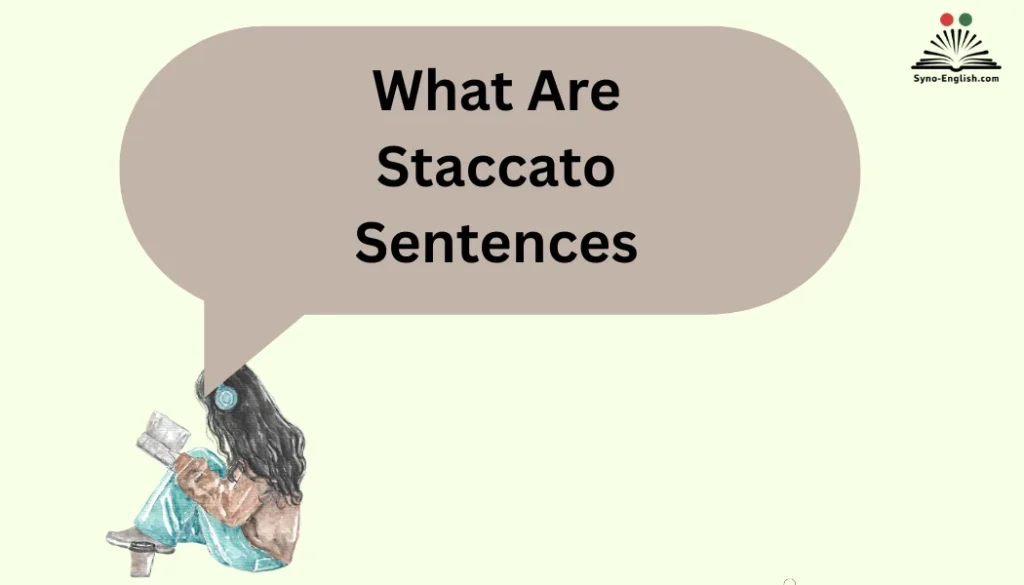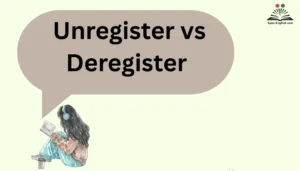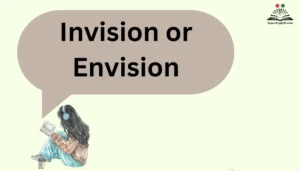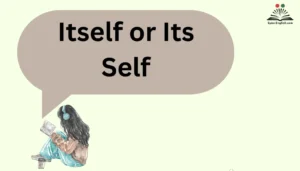In writing, the rhythm and flow create balance that connects the reader deeply to your words. The moment you break that pattern with a short, sharp sentence, something shifts. The jolt demands attention, giving your message power and focus. What Are Staccato Sentences?
They’re concise, deliberate, and full of weight—a word or two can reshape meaning entirely. I’ve noticed that using such staccato sentences in key paragraphs adds a unique emphasis, far more than long lines of description ever could.This guide explores how staccato writing styles work across literature, journalism, advertising, and speeches.
Each field thrives on rhythm, and when you add abrupt, clean phrasing, you invite clarity. When I experimented with this style, I learned that it could improve both pacing and tone, giving each piece stronger control and confidence. Mastering expression through brevity isn’t about cutting—it’s about shaping words to carry intent.
What Are Staccato Sentences?
Staccato sentences are unusually short sentences, often one to three words, written deliberately to create emphasis, speed, or intensity. The term comes from music, where “staccato” means each note is detached and distinct. In writing, the same principle applies—every short sentence stands apart, sharp and direct.
Examples:
- “Stop.”
- “She froze.”
- “It was over.”
Unlike fragments that accidentally break grammar rules, staccato sentences are intentional. They’re tools for clarity and impact.
How they differ from normal sentences:
| Feature | Normal Sentence | Staccato Sentence |
| Length | 10–20 words | 1–5 words |
| Flow | Continuous | Abrupt, clipped |
| Effect on reader | Smooth reading | Sudden pause |
| Usage | General writing | Emphasis, drama |
Writers use staccato sentences sparingly to disrupt the rhythm, forcing readers to stop and pay attention.
The Psychology of Short Sentences
Why do staccato sentences feel powerful? The answer lies in how our brains process language.
- Cognitive load: Short sentences are easier to process. Readers absorb them instantly without mental strain.
- Attention reset: After long passages, a short sentence acts like a reset button. It refocuses the reader.
- Emotional impact: Abrupt sentences mimic natural human speech when emotions run high—fear, anger, shock.
Case study:
During WWII, Winston Churchill’s speeches often used short sentences for maximum impact. One line from his famous 1940 address:
“We shall fight on the beaches. We shall fight on the landing grounds. We shall fight in the fields and in the streets.”
The repetition of staccato sentences gave strength and urgency, embedding the words in listeners’ memories.
The Role of Rhythm in Writing
Writing has rhythm, just like music. Long, flowing sentences feel like a symphony; short, sharp ones hit like a drumbeat. Staccato sentences change the pace and prevent monotony.
How rhythm works in prose:
- Long sentences = descriptive, reflective, calm.
- Short sentences = fast, urgent, intense.
- Alternating both = dynamic, engaging flow.
Example comparison:
Without staccato:
“She opened the letter and read it carefully, scanning every word for meaning, her eyes widening as she realized the truth hidden between the lines.”
With staccato:
“She opened the letter. She read. She froze.”
The second version carries a stronger emotional punch. Rhythm breaks create drama and tension.
Crafting Clarity and Emphasis Through Brevity
Sometimes less really is more. Staccato sentences strip away excess words, leaving the essence.
Ways brevity adds clarity:
- Highlights important information.
- Forces precision—no room for fluff.
- Creates a pause for reflection.
Before vs. After Example:
- Before: “The committee came to the conclusion that the proposal was not acceptable.”
- After (staccato): “The committee decided. Proposal rejected.”
The second version is crisp and impossible to misinterpret.
Quick tip: Use staccato when introducing a turning point, emphasizing a key fact, or closing an argument.
Building Drama, Urgency, and Suspense
Stories thrive on tension. Staccato sentences are one of the fastest ways to crank it up.
Why they work in drama:
- Mimic a racing heartbeat.
- Build anticipation.
- Convey sudden danger or revelation.
Example in action (thriller style):
“The footsteps drew closer. She turned. Silence. A shadow.”
Every short line pulls the reader forward, quickening the pace.
Where to use staccato for suspense:
- Action scenes (fights, chases).
- Emotional breakdowns.
- Sudden realizations or twists.
Case study: In Ernest Hemingway’s The Old Man and the Sea, staccato sentences mirror exhaustion and intensity during the fisherman’s struggle. His minimal style heightens both urgency and realism.
Staccato Sentences Across Different Genres
Staccato isn’t confined to fiction. Different fields use it differently.
Prose
- Speeds up action scenes.
- Adds punch to dialogue.
- Breaks monotony in long chapters.
Poetry
- Creates rhythm and breath breaks.
- Compresses emotion into single strokes.
- Emphasizes imagery with few words.
Speeches
- Engages audiences with memorable sound bites.
- Improves delivery for orators.
- Forces pauses that highlight meaning.
Famous examples:
- Martin Luther King Jr.: “Now is the time. To rise. To act. To make justice a reality.”
- Advertisements: “Just do it.” (Nike)
Examples in Literature and Media
Writers across history have relied on staccato sentences.
Literature:
- Hemingway: Known for economical prose. Example: “He was dead.”
- Cormac McCarthy: Uses staccato for bleak, stripped-down style.
- Charles Dickens: In A Tale of Two Cities: “It was the best of times. It was the worst of times.”
Modern Media:
- Headlines: “Stocks Crash. Markets Panic.”
- Film scripts: “The door creaks. Darkness. A scream.”
- Advertising: “Think different.” (Apple)
Table of usage:
| Medium | Example | Effect |
| Literature | “He was dead.” | Shock, finality |
| Journalism | “Markets tumble.” | Urgency, clarity |
| Advertising | “Just do it.” | Memorability, punch |
| Film | “She runs. Falls.” | Fast pacing |
Sentence Fragments vs. Staccato Sentences
It’s easy to confuse fragments with staccato sentences. The difference is intention and clarity.
- Fragment: Incomplete thought. May confuse readers.
- Staccato sentence: Short but complete. Communicates fully.
Examples:
- Fragment: “Running through the night.” (Who? What happened?)
- Staccato: “He ran.” (Clear and complete.
When fragments work:
- In creative writing to mimic thought patterns.
- For stylistic effect in poetry or stream-of-consciousness.
Guideline: Always ensure clarity. A fragment should add meaning, not confusion.
Practical Guidelines for Writers
Staccato sentences are powerful tools. But like spices in cooking, they must be used in moderation.
When to use staccato sentences:
- To emphasize a key idea.
- To speed up the pace in action or tension.
- To create shock or emotional impact.
When to avoid:
- In explanatory essays where clarity requires detail.
- If overused—they lose impact.
- In academic writing that demands precision and formality.
Checklist for writers:
- Does the sentence stand out?
- Does it emphasize the point?
- Does it enhance clarity or emotion?
- Is the surrounding text varied enough for balance?
Common Mistakes to Avoid
Writers often misuse staccato sentences. Avoid these pitfalls:
- Overuse: Too many short sentences make writing sound robotic.
- Choppiness: Lack of flow between ideas confuses readers.
- Weak fragments: Incomplete thoughts that don’t add meaning.
- Ignoring variety: Effective writing blends short, medium, and long sentences.
Bad example:
“He walked. He saw. He smiled. He left.”
This feels mechanical. A mix of sentence lengths creates better flow.
Better example:
“He walked into the room, scanning the faces. He saw her. He smiled, then turned away.”
Conclusion
The art of staccato sentences lies in their ability to transform writing from ordinary to impactful. By mastering rhythm, flow, and balance, writers can craft sentences that jolt the reader and hold their attention. These short, sharp, and concise expressions don’t just break monotony — they create emphasis, clarity, and strength. Whether used in literature, journalism, or advertising, the power of staccato style rests in its brevity and control. When used wisely, a word or two can carry the weight of entire paragraphs, proving that fewer words often make a louder impact.
Ultimately, staccato sentences are not just a technique, but a form of expression that invites precision and emotion. Writers who avoid overuse and apply practical techniques learn how to refine thought into a powerful punch. Every sentence becomes intentional, every phrase resonates. The goal is not only to improve the tone and clarity of writing but to make readers feel each jolt as if it were their own thought being echoed. With careful use, staccato sentences elevate the craft of communication — leaving an impression that lasts beyond the final word.
FAQs
What are staccato sentences?
Staccato sentences are short, sharp sentences that create impact by breaking rhythm and drawing the reader’s attention.
Why are staccato sentences effective?
They grab attention, emphasize key ideas, and make writing more dynamic and memorable.
Where can staccato sentences be used?
They are effective in literature, journalism, speeches, and advertising to add strength and clarity.
How short should a staccato sentence be?
Usually one to five words — just enough to make a point without unnecessary detail.
Do staccato sentences improve writing?
Yes, they help balance rhythm, add punch, and keep the reader engaged.
Can staccato sentences be overused?
Yes. Overuse can make writing feel choppy or forced, so moderation is key.
What is the difference between short and staccato sentences?
All staccato sentences are short, but not all short sentences are staccato; staccato adds deliberate emphasis.
How can I practice writing staccato sentences?
Start by rewriting long sentences into shorter ones that highlight key emotions or ideas.
Are staccato sentences used in academic writing?
They’re rare in formal essays but can be used sparingly for emphasis or strong conclusions.
What makes staccato sentences powerful?
Their brevity, rhythm, and precision — they say more with less and make words unforgettable.

Emma Brooke is a passionate English educator, writer, and language enthusiast with over a decade of experience helping learners master the nuances of the English language. At SynoEnglish, she blends practical grammar advice with real-world communication tips to make English easier, clearer, and more enjoyable for readers of all levels.



